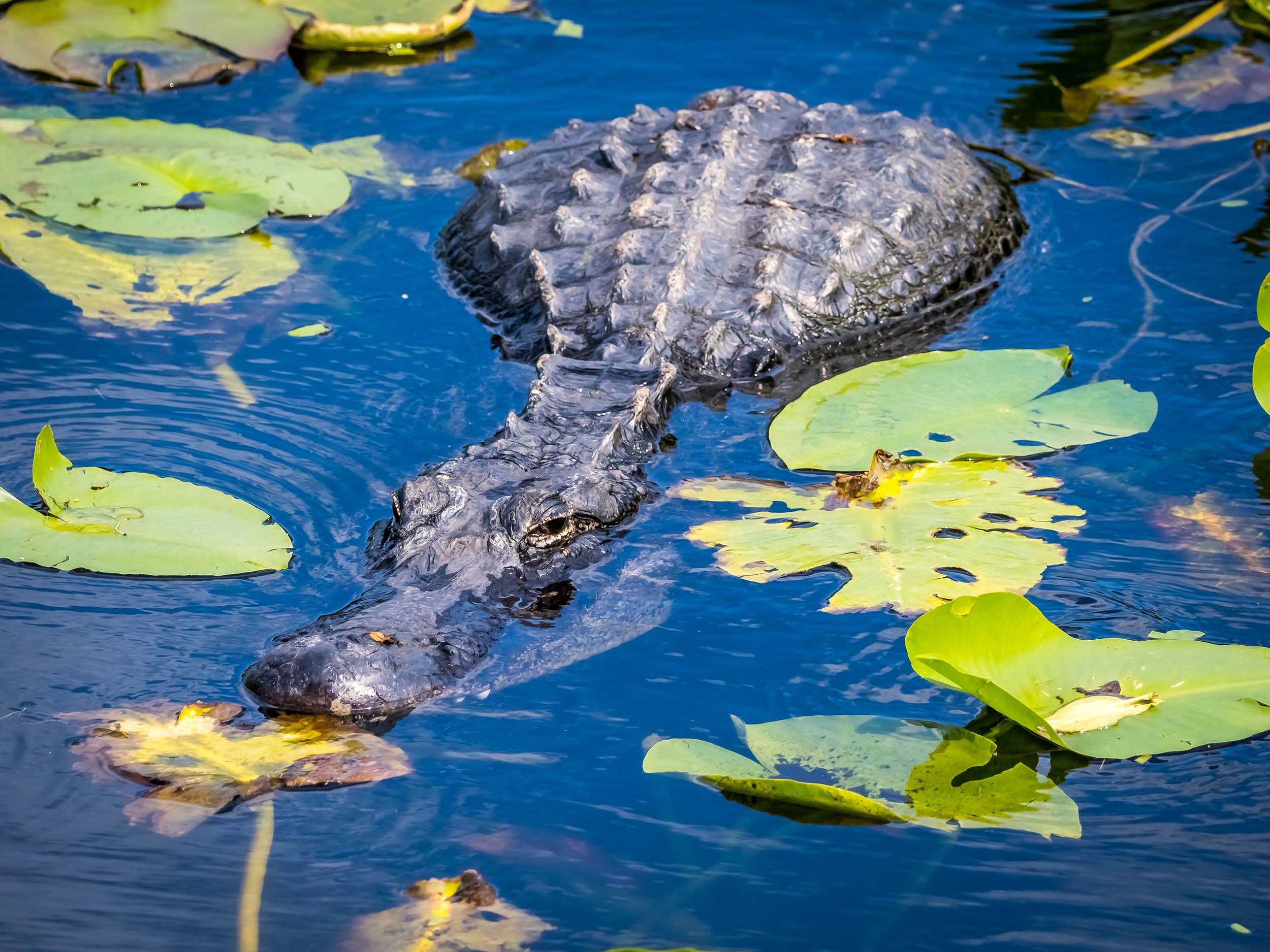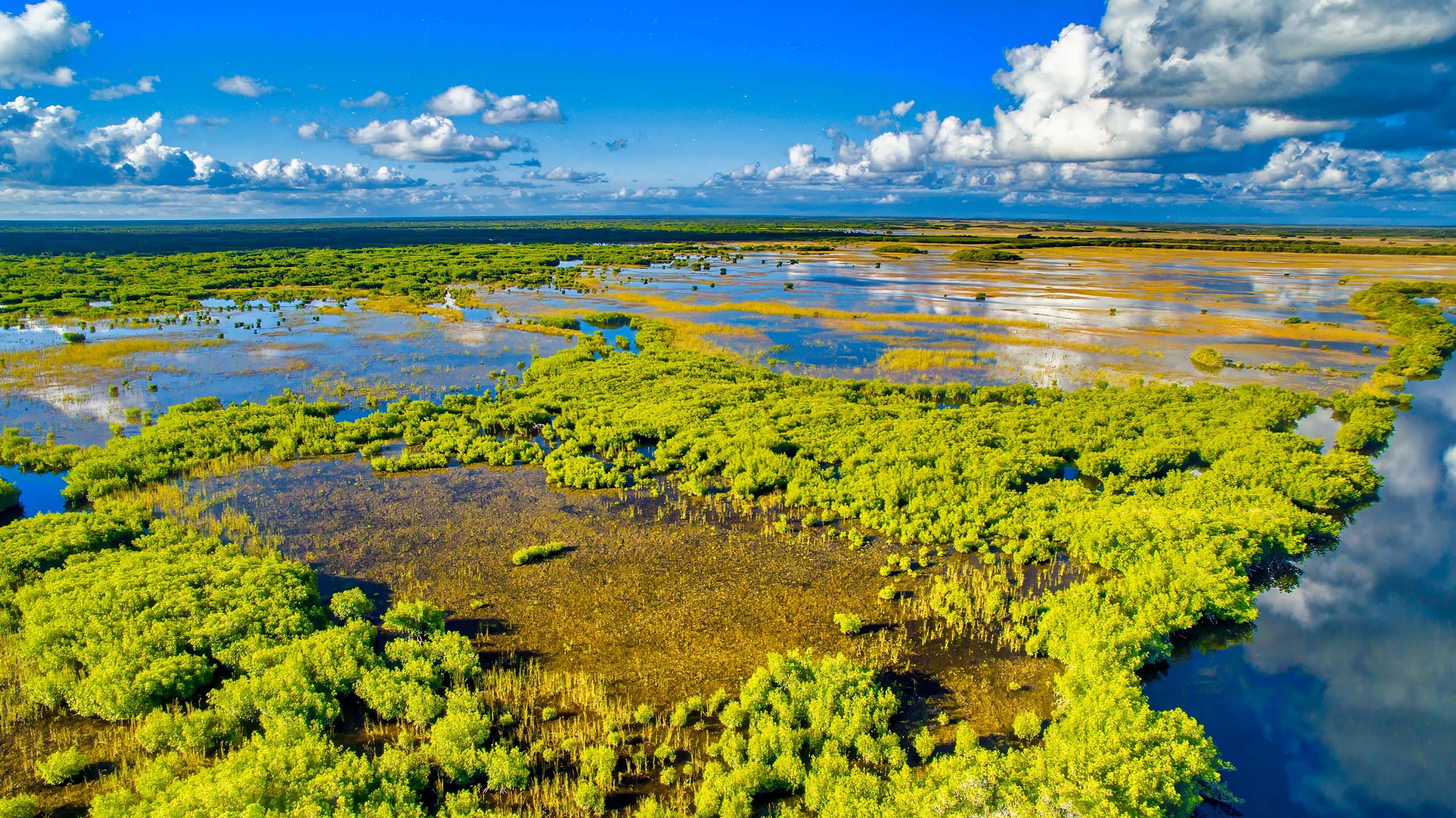Park Information Quick Facts
Location: South Florida
Park Size: 1,509,000 Acres
Time Needed: 1-2 days
Best Season: December – April
Must Do: Guided Tours
Pro Tips: Everglades National Park is best to plan your visit during the dry season. Temperatures are cooler, mosquitoes are less prevalent, and wildlife is more concentrated.
Visitor Centers
Everglades National Park features several visitor centers that serve as key starting points for exploring its vast and unique ecosystems. The Ernest F. Coe Visitor Center, located near Homestead, is the park’s main entrance and provides an excellent introduction to the Everglades. Here, visitors can view educational exhibits, watch orientation films, and speak with rangers to plan their visit. The center also offers maps, brochures, and information on current conditions, such as trail closures or wildlife activity. Nearby, the Anhinga Trail is a popular destination, known for its high concentration of wildlife, including alligators and wading birds. This visitor center is ideal for first-time guests seeking a comprehensive overview of the park’s natural and cultural significance.
Plan Your Everglades Adventure Today!
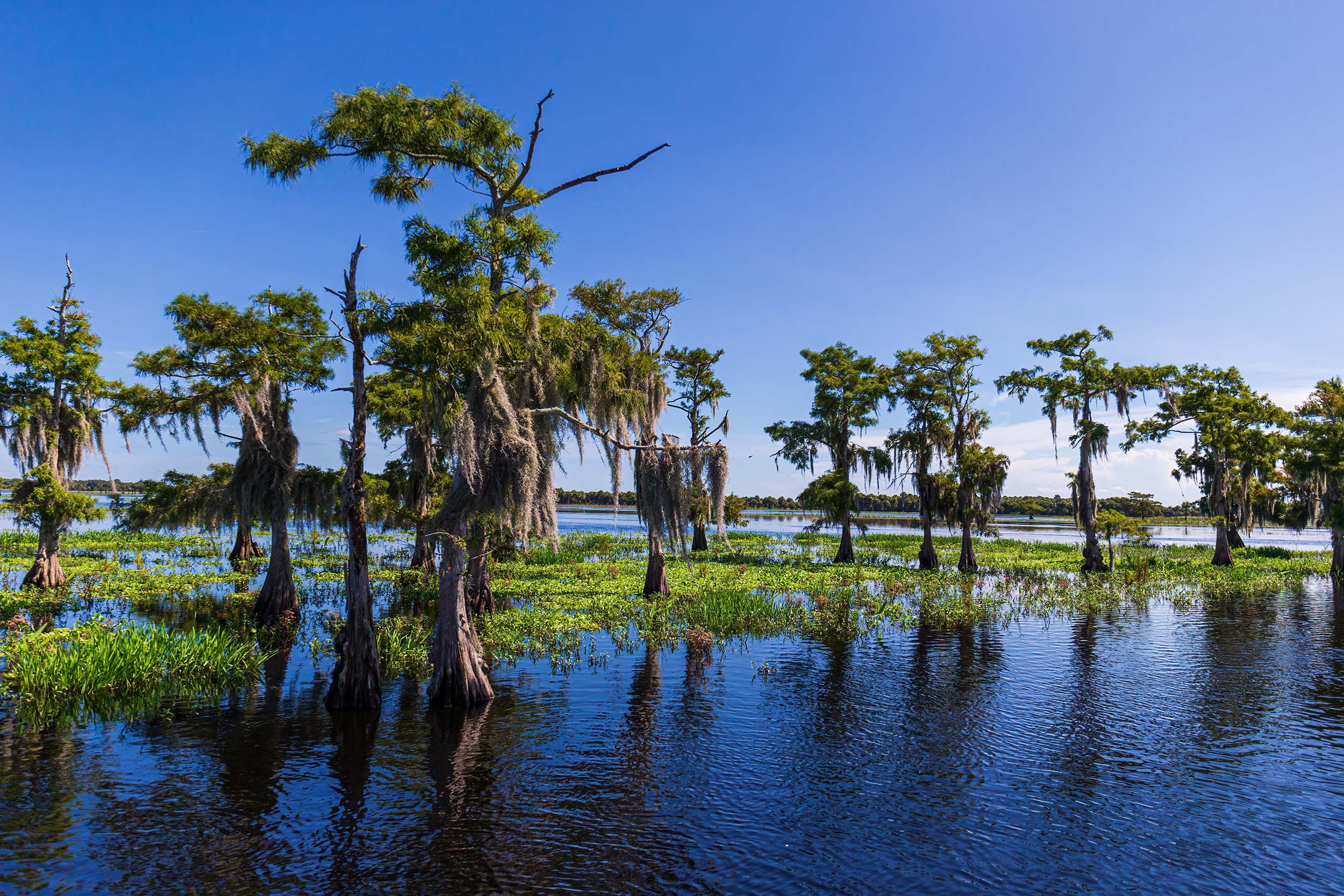
Getting There
How to Travel to Everglades National Park
Traveling to Everglades National Park is straightforward, with multiple entry points accessible by car and nearby airports for visitors coming from farther away. The park is located in southern Florida, just a short drive from major cities like Miami and Naples. The Ernest F. Coe Visitor Center near Homestead is the most popular entry point and is easily reached via U.S. Highway 1, making it ideal for visitors exploring the South Florida region. For those traveling to the western part of the park, the Gulf Coast Visitor Center near Everglades City can be accessed via Interstate 75 (Alligator Alley) or U.S. Highway 41 (Tamiami Trail). If you’re flying, Miami International Airport (MIA) and Fort Lauderdale-Hollywood International Airport (FLL) are the closest major hubs, with rental car services available for the drive to the park.
Once you arrive, having a vehicle is essential for exploring the park, as it covers over 1.5 million acres and offers limited public transportation. The main road, State Road 9336, runs through the park from the Ernest F. Coe Visitor Center to Flamingo, providing access to several key trailheads, campgrounds, and scenic spots. The Tamiami Trail (U.S. Highway 41) is another important route for those visiting Shark Valley or the Gulf Coast Visitor Center. Consider mapping out your destinations in advance, as cell service is limited in many areas of the park. For eco-friendly travel within the park, biking is a popular option, especially at Shark Valley, where visitors can rent bicycles or join tram tours.
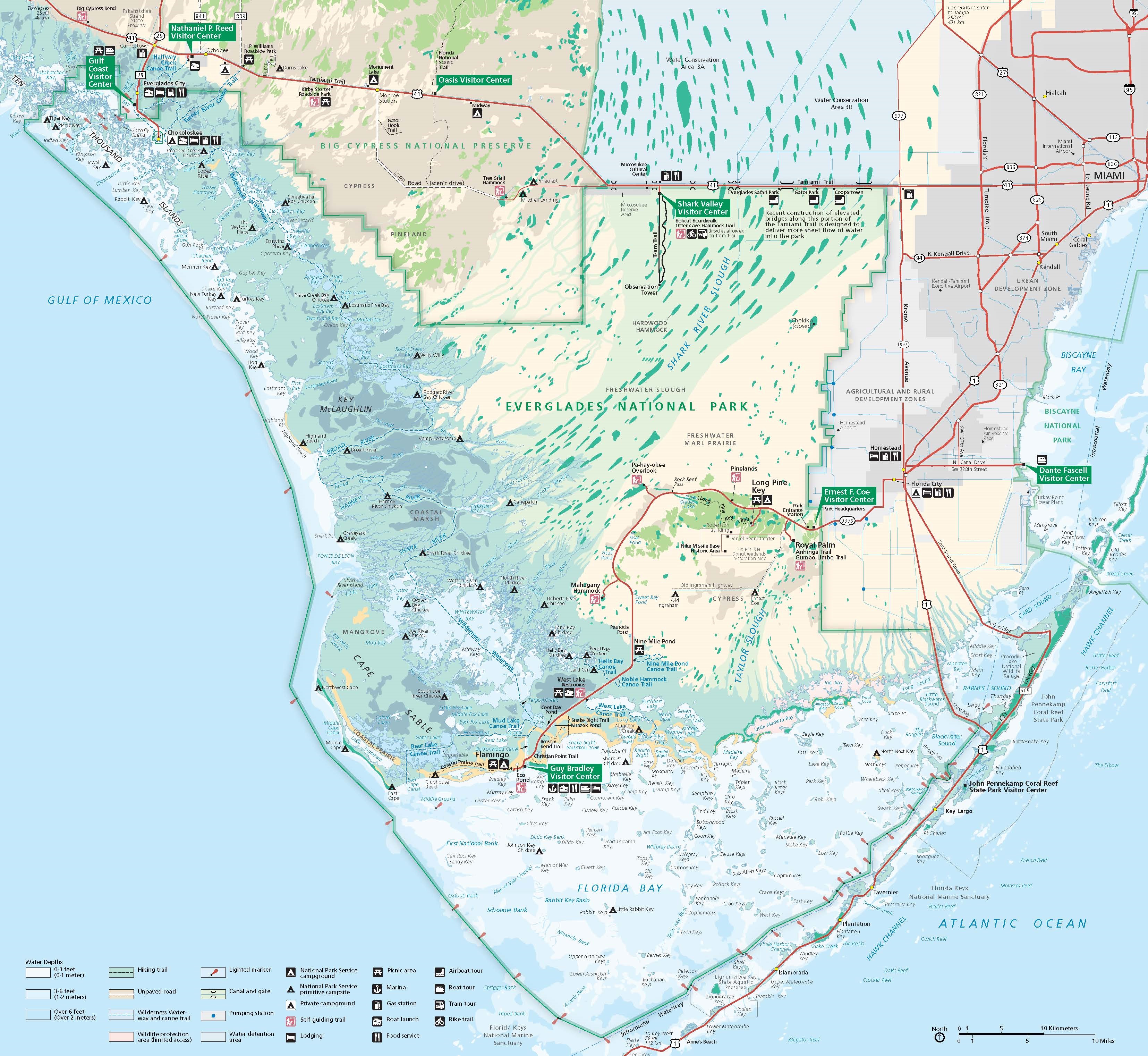
Campsites
Front-Country Campgrounds
Long Pine Key Campground
- Located near the Ernest F. Coe Visitor Center.
- Offers a quiet, wooded area with tent and RV camping.
- First-come, first-served during the off-season; reservations recommended during peak season.
Flamingo Campground
- Situated near Florida Bay, at the southern end of the park.
- Offers tent and RV sites, some with electrical hookups.
- Features incredible views of the bay and opportunities for birdwatching, kayaking, and fishing.
Backcountry Campsites
Chickee Sites
- Raised wooden platforms over water, accessible by boat. Examples include:
- Pearl Bay Chickee
- Shark River Chickee
- North River Chickee
Ground Campsites
- Located on dry land, often near water. Examples include:
- Darwin’s Place
- Hell’s Bay Canoe Ground
- Lard Can
Beach Campsites
- Located along the coast in the Ten Thousand Islands area, offering picturesque beachfront camping. Examples include:
- White Horse Key
- New Turkey Key
- Rabbit Key
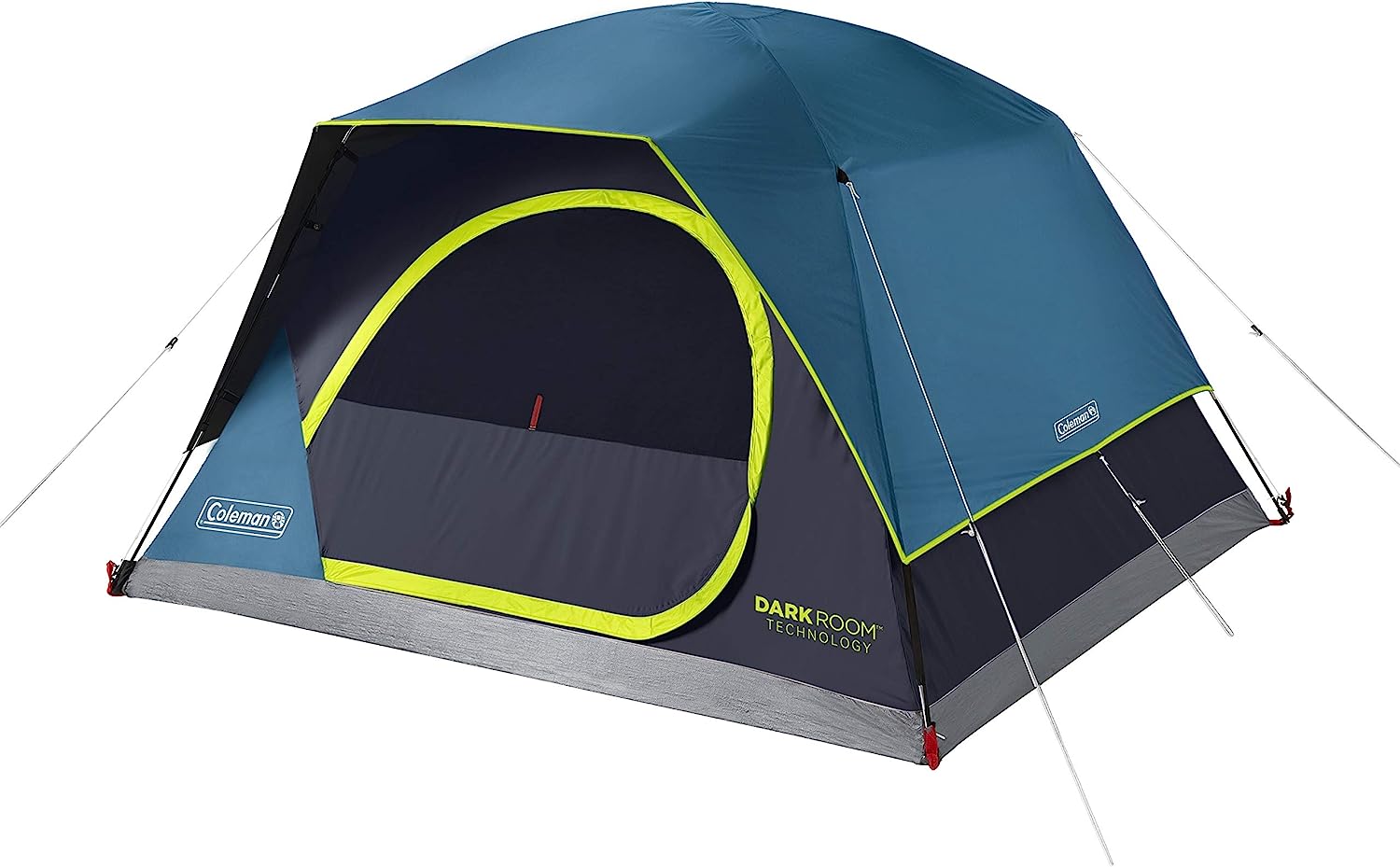

Here are three essential tips for camping at Everglades National Park:
1. Plan and Prepare for Permits
If you’re planning to camp in the backcountry, ensure you obtain the required permits, which can be reserved in advance or issued in person. Familiarize yourself with the park’s rules for backcountry sites like chickees, beach campsites, or ground sites, and plan your route carefully. For front-country camping at Long Pine Key or Flamingo, making reservations during the peak season (November to April) is recommended to secure your spot.
2. Pack for the Environment
The Everglades’ subtropical climate requires careful packing. Bring insect repellent and protective clothing to guard against mosquitoes, especially during the wet season. Prepare for varying temperatures, as nights can get chilly even in warm months. Pack sufficient water, as potable water may not always be available at remote sites, and store food securely to avoid attracting wildlife.
3. Be Wildlife and Weather Aware
The Everglades is home to diverse wildlife, including alligators, snakes, and raccoons. Practice safe camping habits, such as keeping a respectful distance from animals and properly disposing of food waste. Check weather conditions regularly, as sudden storms or high winds can be dangerous, especially in exposed backcountry sites like chickees or beach campsites. Always have a backup plan and know your escape routes in case of emergencies.
Popular Hiking Trails
Flamingo Area Trails
Anhinga Trail
- Distance: 0.8 miles (round trip)
- Difficulty: Easy
- Highlights: Elevated boardwalk with abundant wildlife like alligators and wading birds.
Gumbo Limbo Trail
- Distance: 0.4 miles (loop)
- Difficulty: Easy
- Highlights: Shady walk through a hardwood hammock.
Guy Bradley Trail
- Distance: 1.0 mile (one-way)
- Difficulty: Easy
- Highlights: Scenic views along Florida Bay near Flamingo Visitor Center.
Coastal Prairie Trail
- Distance: 7.5 miles (one-way)
- Difficulty: Moderate to strenuous
- Highlights: Remote trail with views of salt flats and mangroves.
Homestead/Ernest F. Coe Area Trails
Pinelands Trail
- Distance: 0.4 miles (loop)
- Difficulty: Easy
- Highlights: Explore the unique pine rockland habitat.
Mahogany Hammock Trail
- Distance: 0.5 miles (loop)
- Difficulty: Easy
- Highlights: Dense tropical forest featuring the largest mahogany tree in the U.S.
Pa-hay-okee Overlook Trail
- Distance: 0.2 miles (loop)
- Difficulty: Easy
- Highlights: Boardwalk trail with panoramic views of the sawgrass prairie.
Shark Valley Tram Road
- Distance: 15 miles (loop)
- Difficulty: Moderate
- Highlights: Paved trail with excellent wildlife viewing and an observation tower.
Hiking Trails in Everglades National Park
Gear We Used

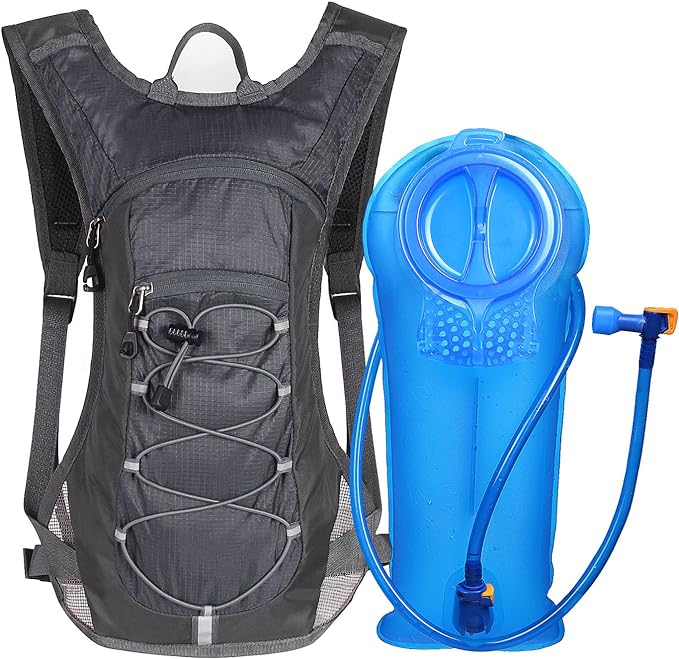
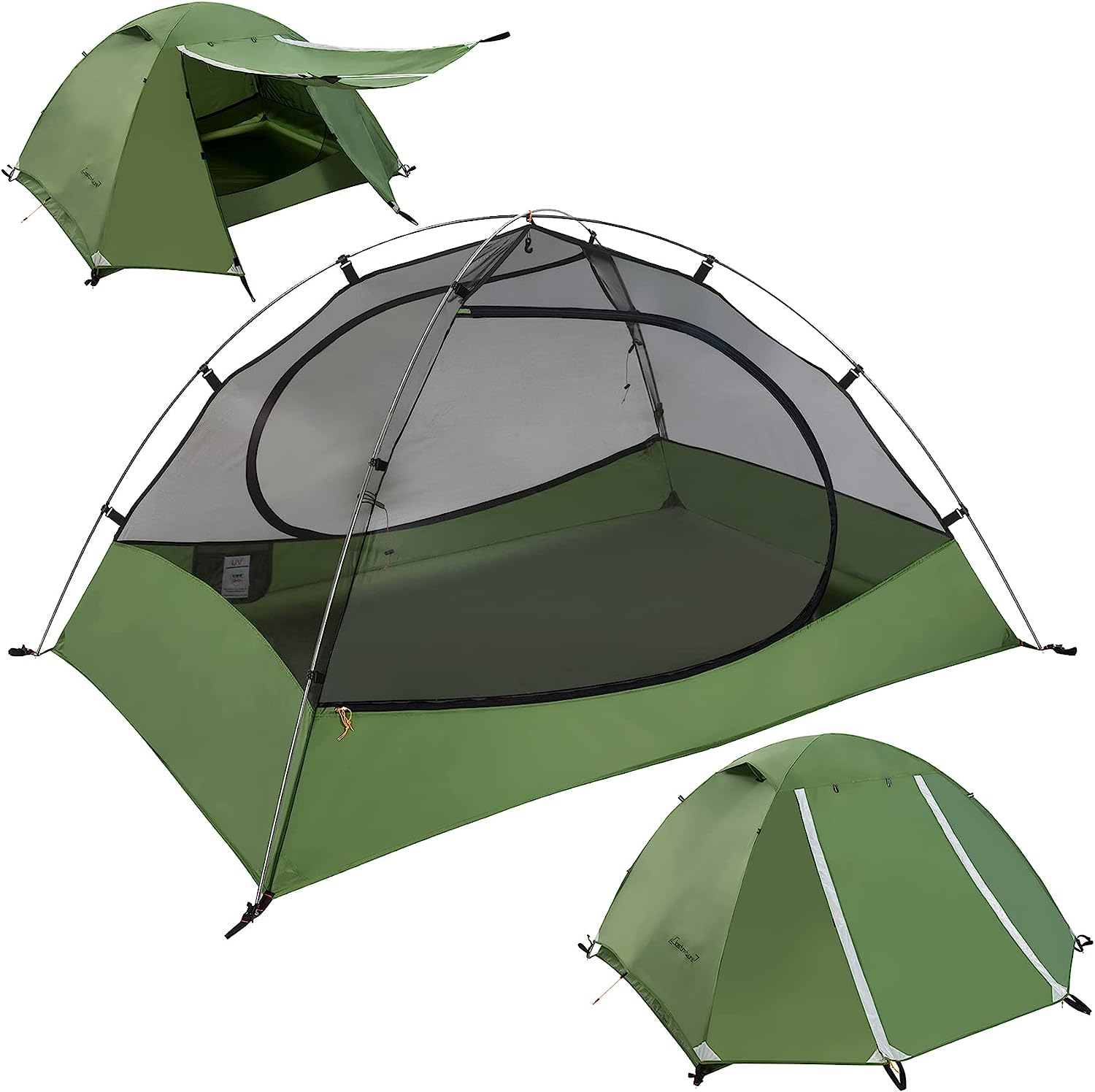
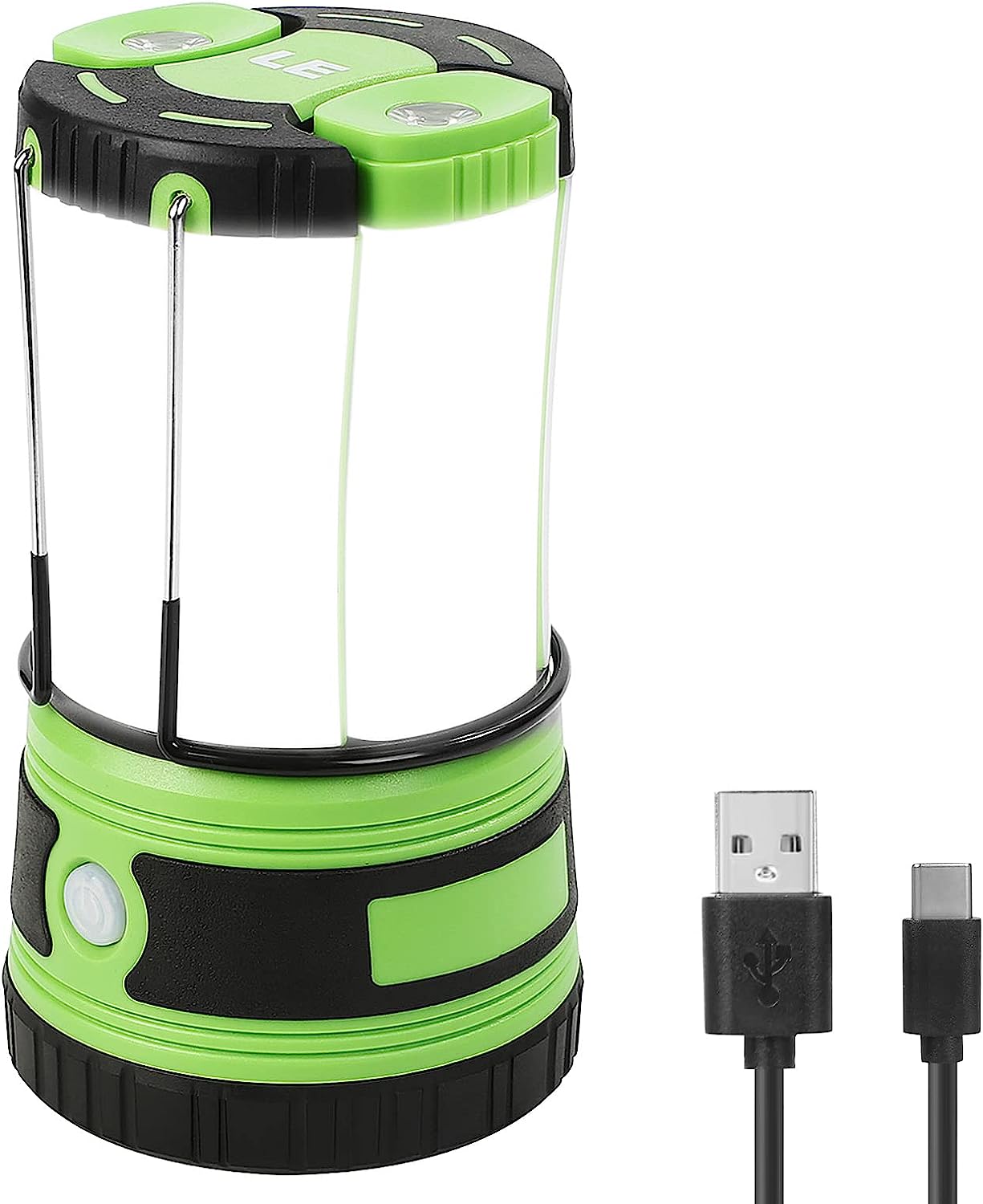

Must-Do Activities
Explore the Everglades by Boat or Kayak
One of the best ways to experience the Everglades’ vast and intricate waterways is through a boat tour or kayaking adventure. The Ten Thousand Islands, accessible from the Gulf Coast Visitor Center, offers a labyrinth of mangrove forests, tidal creeks, and open bays that are perfect for exploring. Guided boat tours provide insights into the park’s ecology and history, while kayakers can paddle through quiet, narrow channels for an up-close view of wildlife like manatees, dolphins, and wading birds. For a more adventurous experience, follow the Hell’s Bay Canoe Trail to discover secluded backcountry areas and unique chickee campsites.
Walk the Iconic Anhinga Trail
The Anhinga Trail, near the Ernest F. Coe Visitor Center, is a must-visit for its accessibility and incredible wildlife viewing. This short boardwalk trail (0.8 miles round trip) winds through the sawgrass marsh, offering close encounters with alligators, turtles, and a wide variety of birds. The trail is particularly active during the dry season when wildlife gathers around the remaining water sources. With its abundant photo opportunities and interpretive signs, the Anhinga Trail provides an excellent introduction to the park and its ecosystems, making it ideal for families and first-time visitors.
Bike or Tram Ride Through Shark Valley
Everglades National Park History
The history of Everglades National Park is a story of transformation, conservation, and the recognition of a unique ecosystem’s importance. For centuries, the region was inhabited by Indigenous peoples, including the Calusa and later the Seminole, who adapted to its challenging conditions and relied on its natural resources. By the late 19th century, as settlers moved into South Florida, efforts to drain the Everglades for agriculture and development began in earnest. Canals, dikes, and other modifications drastically altered the landscape, leading to the loss of wetlands and a decline in wildlife populations. The ecological importance of the Everglades was largely overlooked during this period of expansion.
In the early 20th century, a growing awareness of the Everglades’ unique ecosystems sparked efforts to protect it. Advocates like naturalist Marjory Stoneman Douglas played a crucial role in bringing attention to the Everglades’ environmental value through writings and activism, emphasizing its role as a “River of Grass.” These efforts culminated in the establishment of Everglades National Park in 1947, making it the first national park created to protect an ecosystem rather than specific scenic features. Despite its designation, the park initially covered only a portion of the original Everglades, and efforts to restore and preserve the region continued for decades.





